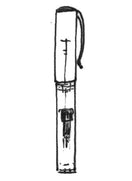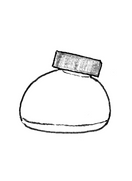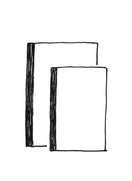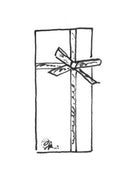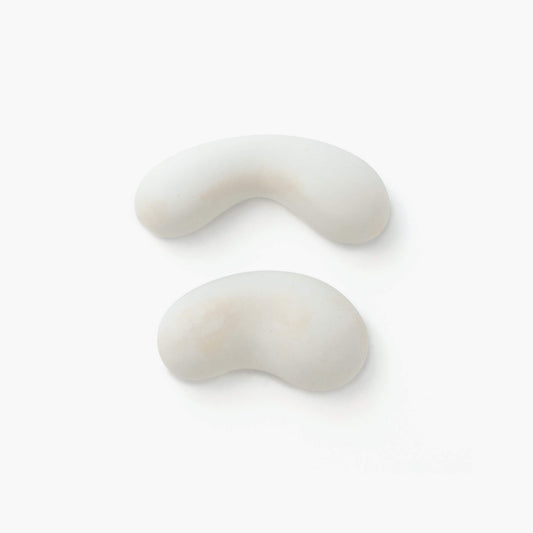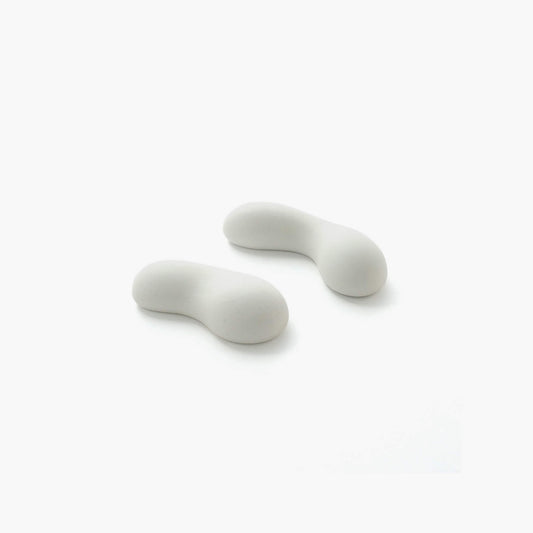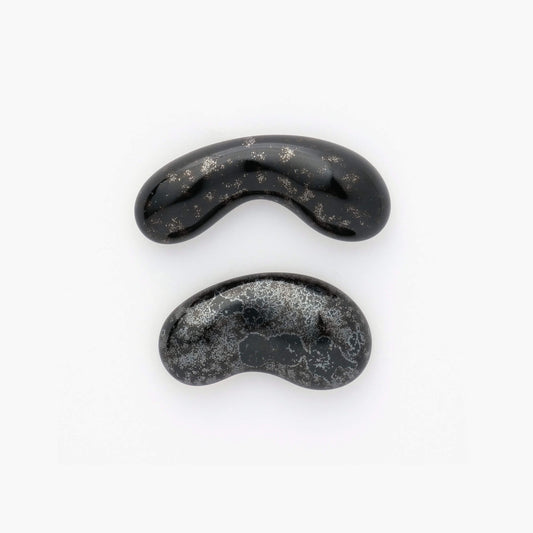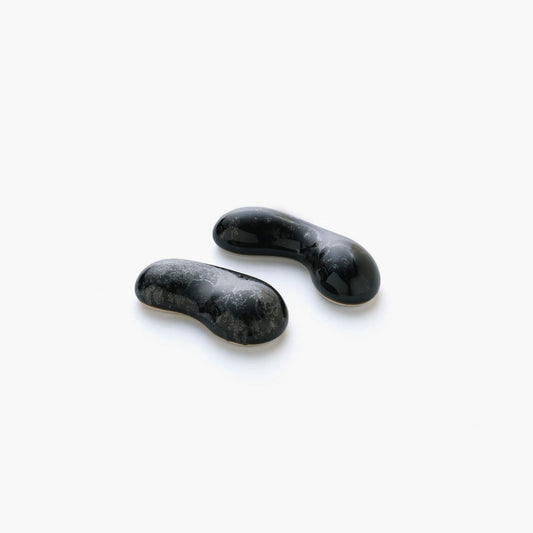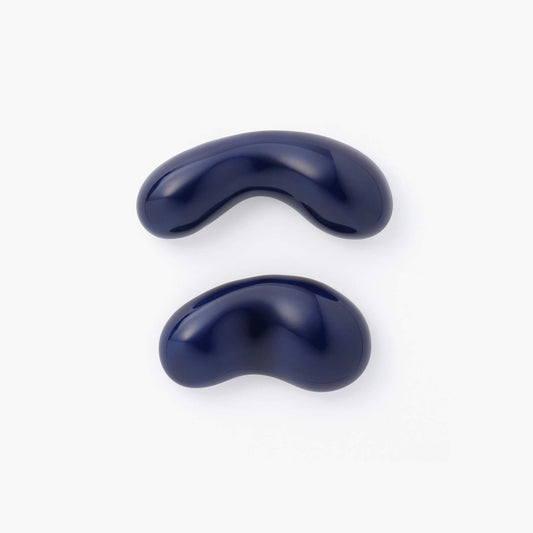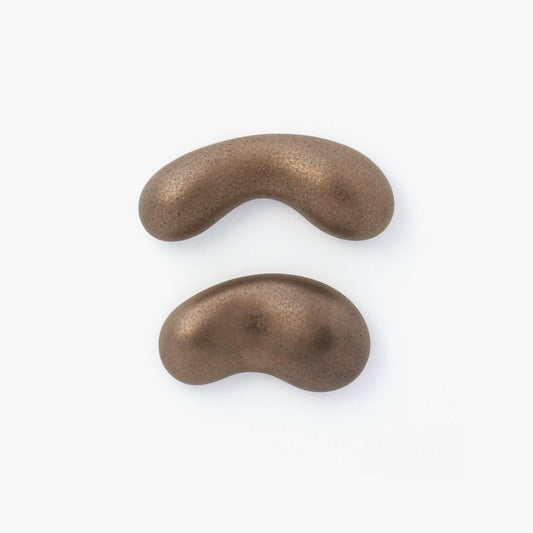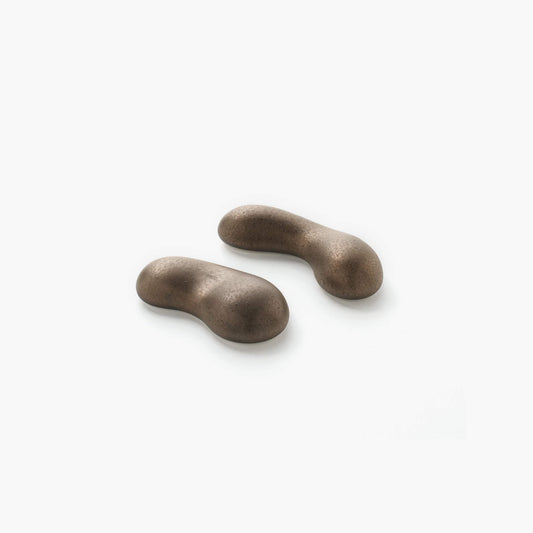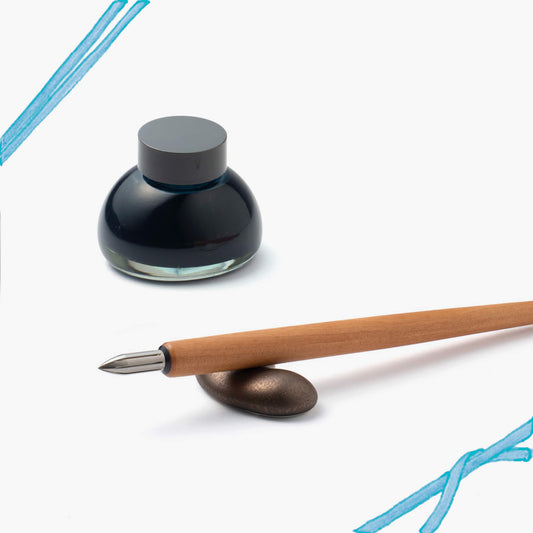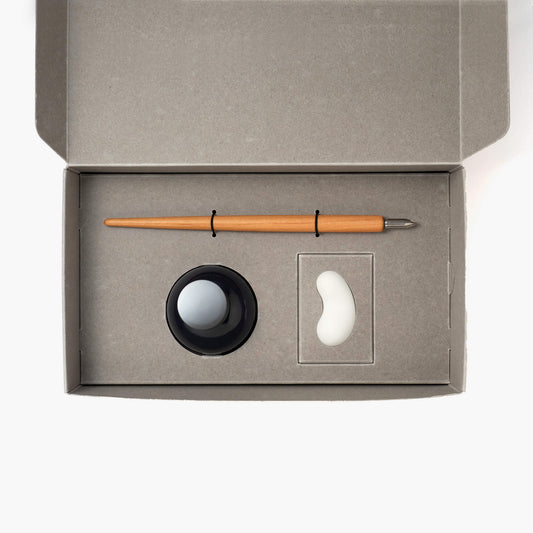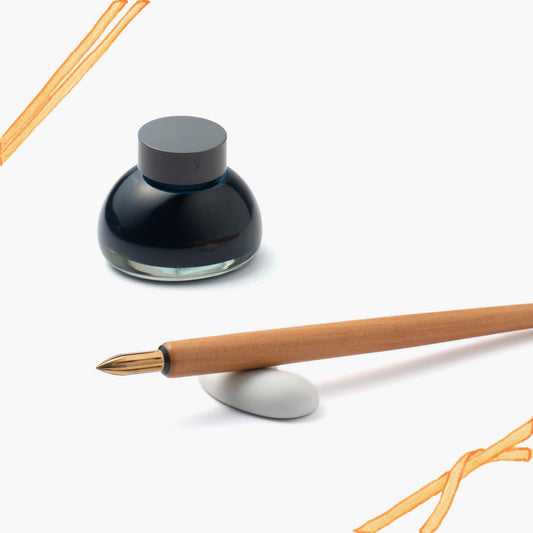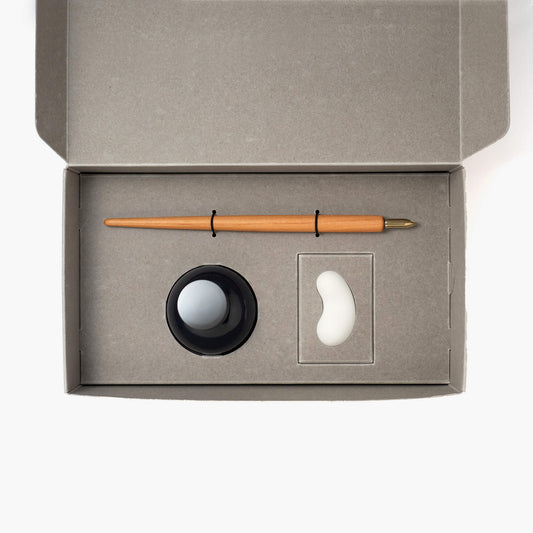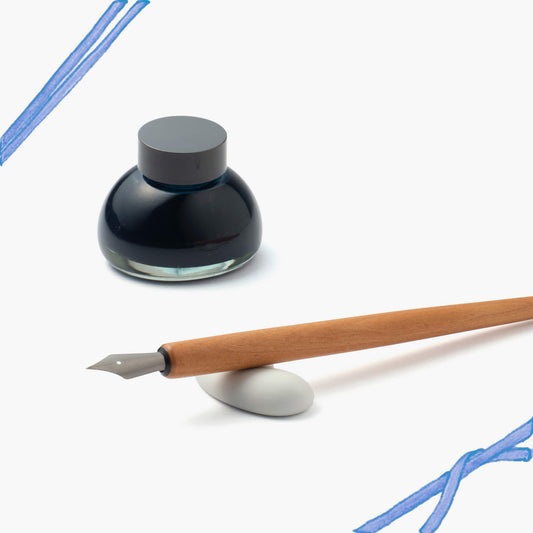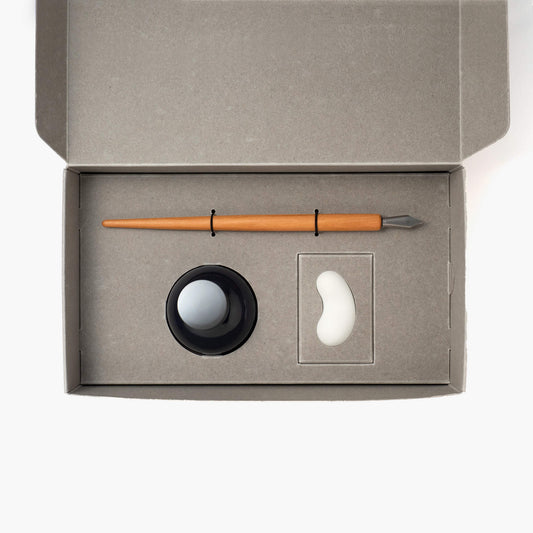The Hasami ware pen rest was created with designer Makoto Koizumi. We travelled to the town of Hasami in Nagasaki prefecture, the birthplace of Hasami ware, to visit our production kiln Koushun-gama.

Pottery towns Arita and Hasami
Arita and Hasami ware have a rich history dating back more than 400 years. The region has firmly established itself as a centre for porcelain production, thanks to the abundance of vital natural resources such as kaolin stone and fresh water.
Signs of pottery are visible in various corners of the towns. Visitors are greeted by streets adorned with porcelain pieces and walls built with bricks from former noborigama (climbing kilns).

At the carpark of Izumiyama Jisekiba (quarry)

A wall built using bricks from disused noborigama (climbing kilns). The distinctive lustre comes from the layers of glazes baked onto the kiln interior.
Izumiyama Jisekiba, located in Arita, is the site of the former quarry where kaolin stones were once excavated. The open space is what remains of an entire mountain that was dug away and turned into porcelain over 400 years.

Up close, you can see the bright white colour beneath the surface of the stone, considered ideal for porcelain production.

Visiting Koushun-gama kiln
Koushun-gama, the kiln that oversees the production of our pen rest, is located in Mount Nakao in Hasami. The area has preserved its history as a pottery village since the early days when Hasami ware was sold collectively as Arita ware.

We were introduced to the glazing process as soon as we arrived. Bisque-fired pieces are carefully laid out on wire racks to prevent fingerprints, and dipped in the glaze.


One by one, the glaze is removed from the underside of each pen rest.

Since the Edo period, the town of Hasami has been producing porcelainware for common households rather than as a luxury product. This has informed the unique way of its production that balances efficiency with traditional craftsmanship.
Glazing — a transformation
We were surprised to learn that raw glazes do not always look like the colour after firing, as seen here with the Ruri (lapis lazuli) glaze.

All of the glaze varieties we chose are coloured by a chemical reaction with the heat of the kiln. The Ruri glaze contains cobalt, which transforms into an intense blue upon firing.
Each Hasami kiln has its own formula for this classic glaze, and our pen rest proudly features Koushun-gama’s signature blue.

Each Hasami kiln has its own shade of Ruri.
The dramatic colour transformation before and after firing can also be seen with our other glazes.
This is the Yuteki glaze. Iron is sprayed over the glaze to create the surface pattern.

The golden Kindei glaze has an unassuming grey appearance when raw. Manganese has been added to the glaze to bring out its golden lustre when fired.

We found ourselves endlessly mesmerised by the fascinating world of ceramic glazes.
Collaborative Hasami ware production
To find out what happens before and after glazing, we spoke with Haruho Baba from Koushun-gama, and Yasushi Shinohara from wholesale pottery merchant Marushige Pottery.
Hasami ware production is highly unique in that it is a town-wide collaboration of craftspeople who each specialise in one stage of the whole process. This division of skill allows the efficiency needed for mass production while maintaining quality artisanship.
The long journey of porcelain production begins with the raw kaolin stone.

The stone is ground and sent to the kijiya, who creates the porcelain clay. Our pen rest is made by slip casting, whereby a clay slurry (“slip”) is poured into plaster moulds. The slip is highly refined to eliminate any iron residue and imperfections at the firing stage.
Next, the slip is passed onto the kataya, who creates the moulds. The moulds are made with an allowance for shrinkage during firing.

An example of a mould for a plate.
The Kakimori logo on the bottom of each pen rest is stamped by hand at the casting stage. Maker’s marks are typically compact in design, as stamping a wide surface area of soft clay takes great skill. We’re thankful to the kataya for making a special exception to work with our logo.

A typical maker’s mark is often a small icon.

A resist is applied to each logo prior to glazing to retain the white colour of the porcelain. We were humbled by the level of attention that goes into marking our logo.

Finally, the slip-cast pieces known as nama (greenware) are delivered to Koushun-gama to be bisque fired and glazed. Bisque firing stabilises and strengthens greenware in preparation for applying glazes and decorations.

Pen rests awaiting glazing.
The glazed bisqueware is now ready for the final glaze firing. Kiln technology has advanced over the course of centuries, evolving from the early noborigama (climbing kilns) dug into hillsides, to wood-fired, coal and oil-fuelled kilns, and arriving at the modern gas kiln.

After 16 hours of firing in this kiln, our pen rests are finally completed.
Crafted with care and respect
The pen rest’s long journey has come to an end.
From the initial clay making to firing, the carefully tailored environment encompassing all stages of production is testament to the intimate working relationship between Baba and Shinohara. We’re told it took them over two decades to reach the level of mutual respect that allows Shinohara to propose new projects to Baba, such as our pen rest.

Haruho Baba from Koushun-gama (left) with Yasushi Shinohara from Marushige Pottery (right)
Something that deeply resonated with us in conversation with the pair is that they spoke of pottery as “working with nature”.
The creation of Hasami ware is largely guided by unseen elements. It’s an intricate act that brings together the clay’s organic composition, humidity, glaze properties, and the position and duration of firing. We sensed that the greatest allure of pottery is in seeing the subtle uniqueness of each piece that is revealed by firing.
Celebrating this individual character is the intention behind the Karayaki finish. The unglazed finish invites us to appreciate and embrace the natural textural variations of raw porcelain as a feature, rather than an imperfection.

Karayaki (left), with a glaze (right)
Although a uniform white finish can be achieved by applying a glaze, we chose to retain the matte, smooth feel of porcelain along with its natural variations.
Witnessing the craft of Hasami ware in its birthplace renewed our admiration for each of its unique characteristics. We’re proud to bring you our latest tool for writing, the Hasami pen rest, crafted with care by the hands of many artisans.

